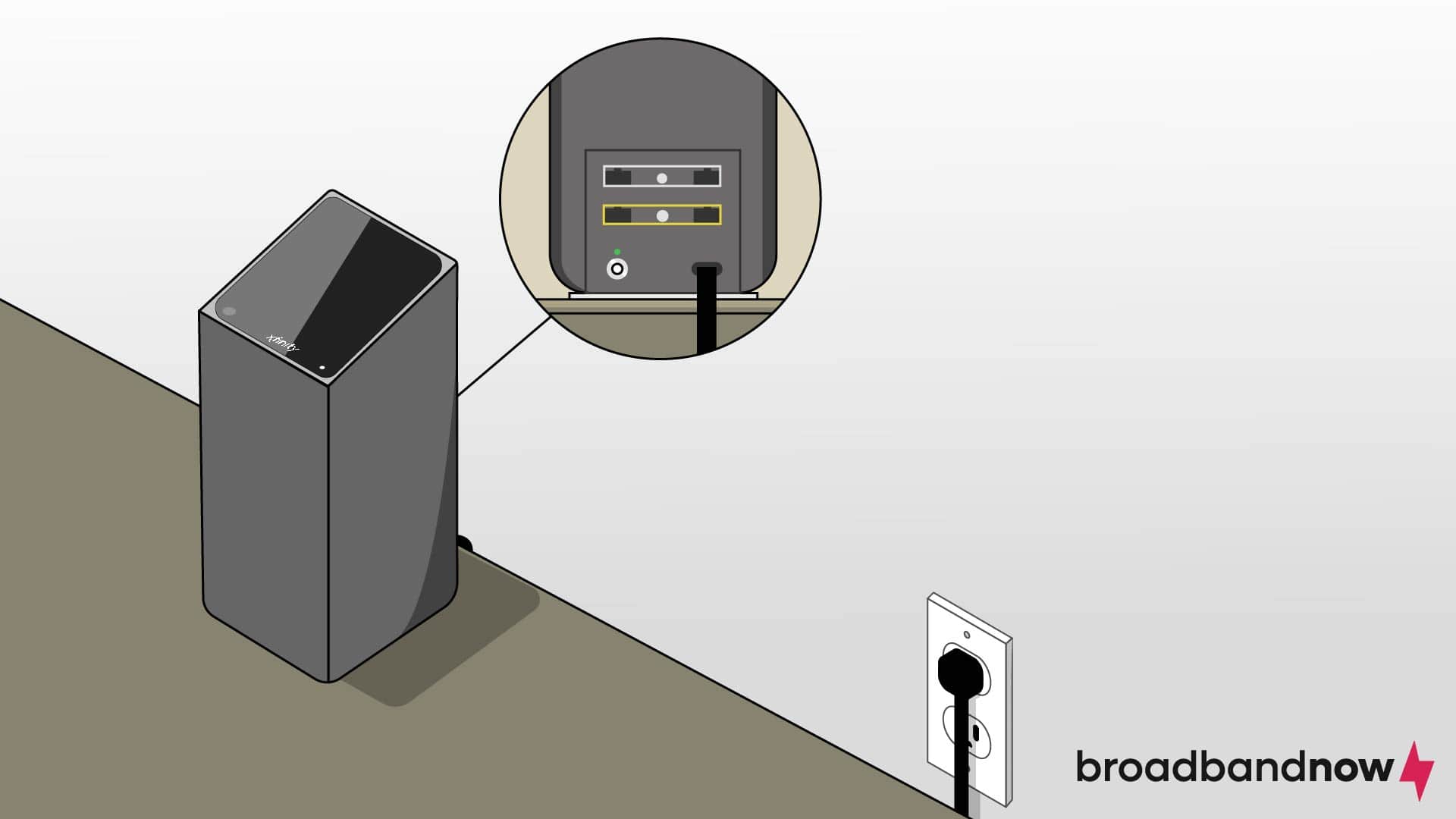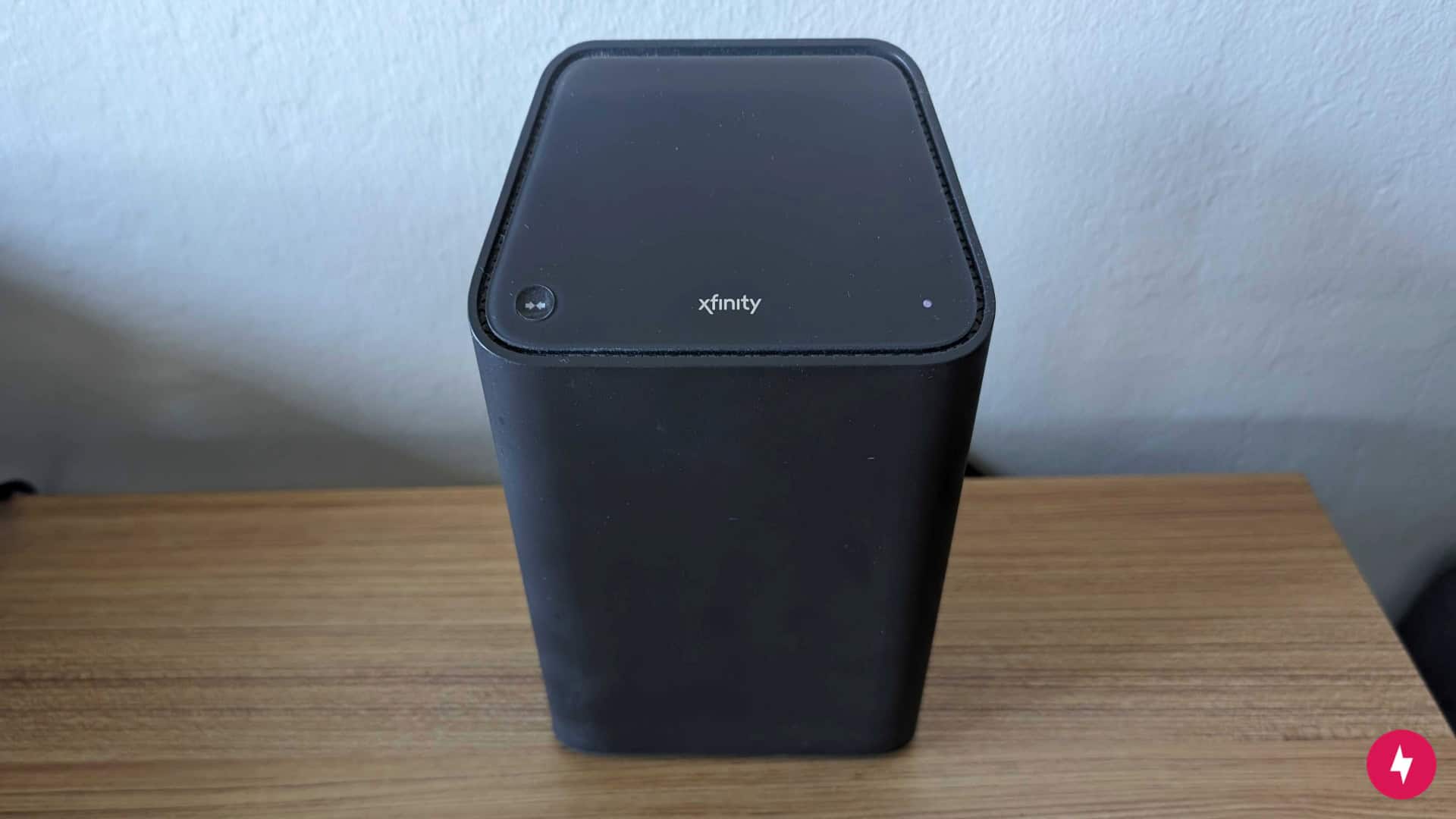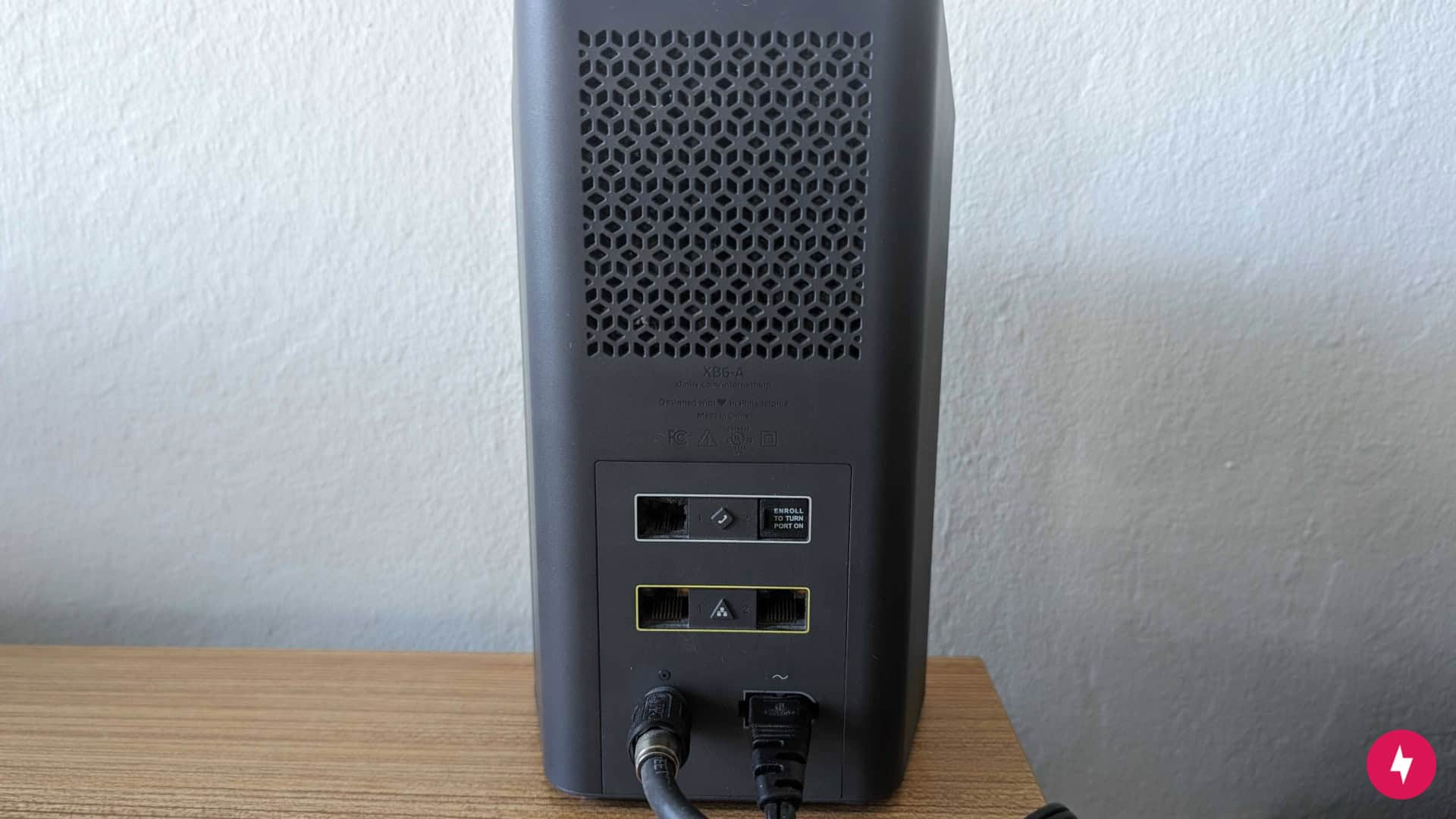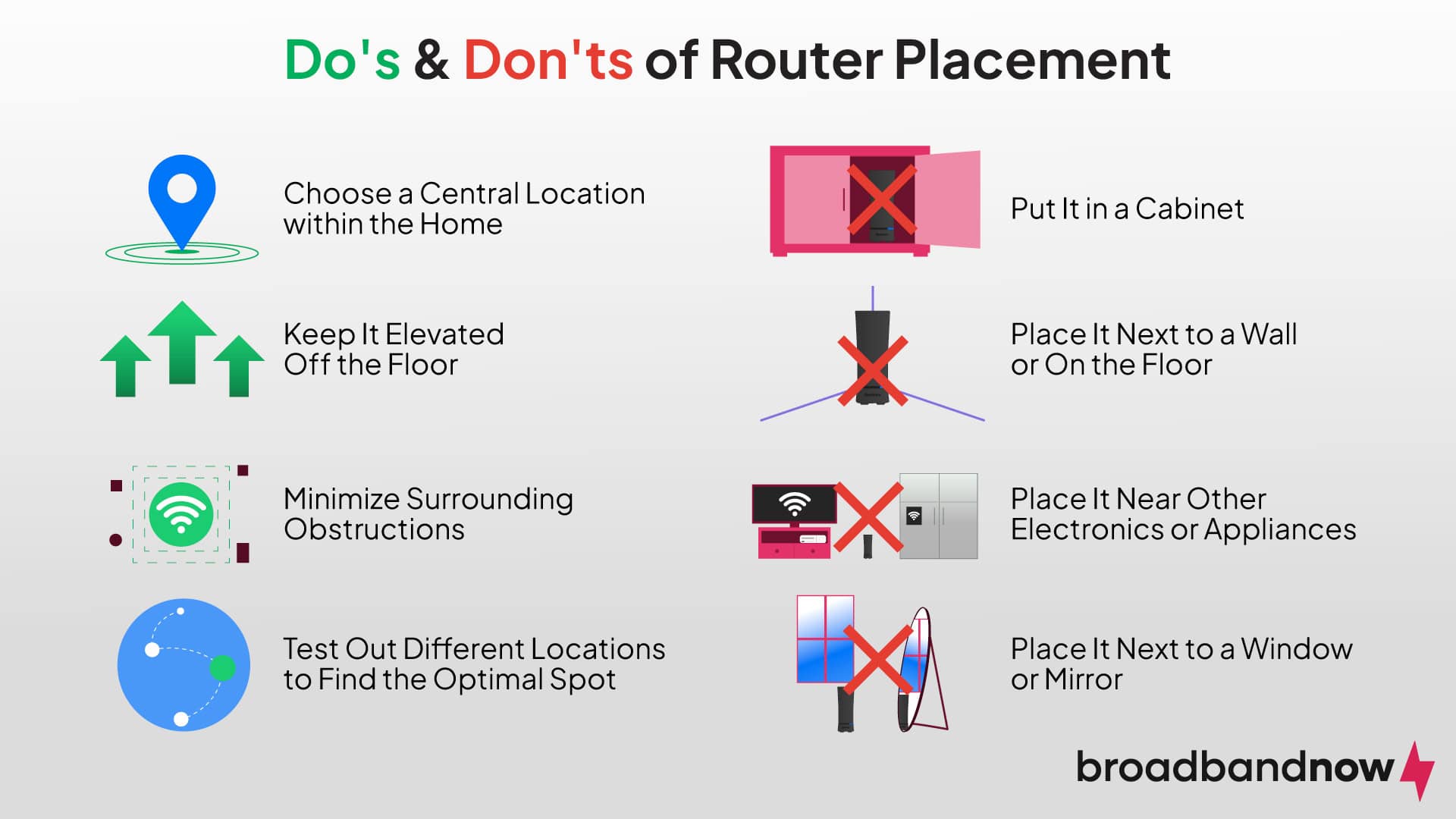How to Self-Install Xfinity Internet: Step-by-Step Guide
With its mobile app and setup instructions, Xfinity makes self-installing your internet a breeze.

Hiring a professional technician to install your internet service can be expensive and a waste of time. With Xfinity, especially if you have the xFi Gateway, you have the option to self-install. This results in money saved and time freed up for more important matters. In this guide, we go over the step-by-step process of installing Xfinity internet service to ensure you’re connected right away.
Overview of Self-Installing Xfinity Internet
- Our Video on How to Self-Install Xfinity Internet
- The Benefits of Self-Installing Xfinity Internet
- What You Need Before Self-Installing Xfinity Internet
- How to Self-Install Xfinity Internet
- Where to Place Your Xfinity Router
- Troubleshooting Common Self-Install Xfinity Internet Installation Issues
- Frequently Asked Questions About Self-Installing Xfinity Internet
Our Video on How to Self-Install Xfinity Internet
Need a video version of this article? Check out our video below and don’t forget to subscribe to our YouTube channel for more videos like this!
The Benefits of Self-Installing Xfinity Internet
Besides affordability, self-installing internet allows you to connect to your Wi-Fi sooner, since you won’t have to wait for a technician to set it up. Unlike other ISPs’ equipment that comes with a router and modem, Xfinity’s xFi Gateway is a two-in-one combo; it provides simplicity to the setup process and one less piece of equipment to worry about. I was thrilled that I didn’t have to connect a bunch of cables with my xFi Gateway, especially since my living room where I set it up doesn’t have many outlets.
That’s not to say self-installation is always the best choice; the situation varies from person to person. Below, we highlight the pros and cons of self-installation and professional installation. Note that these are specific to Xfinity internet installation and may be different for other ISPs.
| Details | Self-Installation | Professional Installation |
|---|---|---|
| Pros | DIY on your own time
Straightforward setup with the mobile app |
Convenient installation
Troubleshooting handled by a technician Can move connections |
| Cons | Prone to unchecked issues during setup
Must use current connection location |
Must schedule an appointment with a four-hour waiting-for-arrival timeframe |
If you do end up going the self-installation route, you can either use the equipment included in your internet plan, or purchase your own. However, buying your own modem and router means you won’t be able to contact Xfinity for technical issues or support. Since all internet plans include the option of having your equipment installed professionally or through self-installation, it’s typically best to use the equipment provided by Xfinity so that you can troubleshoot with a support member if anything happens.
One instance in which you’d need to go the professional installation route is if you need to move your connection to a different location. Another is if you’re not tech-savvy. My parents also have Xfinity internet; they decided to hire a professional technician to set up their internet service because they’re not good at reading instructions in English. While these unique situations might not apply to everyone — certainly, if you just want to play it safe, then go with a technician — know that Xfinity does offer both installation options for most plans; plus, they don’t force you to do one or the other.
What You Need Before Self-Installing Xfinity Internet

Before you self-install your Xfinity internet, you’ll need to make sure that you have the following:
- Self-Installation Kit: While self-installation cuts out labor costs, you’ll still need the self-installation kit. The kit can be delivered straight to your home for a shipping fee or picked up at any Xfinity store free of charge.
- Compatible Modem (Optional): This only applies if you don’t have the xFi Gateway. If you don’t, you must have an Xfinity-compatible modem to successfully self-install Xfinity internet. If your current modem doesn’t support Xfinity, consider buying or renting one from Xfinity’s list of compatible modems.
- Xfinity Cable Line: Check to make sure that you either have an existing Xfinity cable line or have switched from a previous provider. If you’re using a cable line from a different ISP, you’ll need to make the switch before attempting to install Xfinity internet.
- Xfinity Mobile App (Optional): While it’s not required for installation, the Xfinity mobile app provides features like real-time support, troubleshooting help, and account management. The app is available for both iOS and Android users.
How to Self-Install Xfinity Internet
Once you’ve acquired all of the necessary tools and equipment, you can then start the self-installation process. The amount of time it takes to install will vary; however, when I set up my xFi Gateway, it took about 30 uninterrupted minutes.
Download the Xfinity xFi Mobile App and Identify the Gateway
After you’ve unboxed your Gateway, you’ll need to download the mobile app. Once downloaded, you’ll either create an account with an Xfinity ID and password or log in with your pre-existing credentials. Then, look for the QR code on the bottom or side of the Gateway; this is what you’ll need to scan to identify your device. Once scanned, a green checkmark should appear.
Place Your Xfinity Gateway in a Good Location
I recommend placing the Gateway in a central location with little to no interference between it and your devices. This doesn’t have to be the center of the house — just an open area where the signal can travel freely. I placed mine in the living room on top of my office desk near a cable outlet.
Connect Your Xfinity Gateway

Take the coaxial cable that’s included in the self-install kit and plug one end into the back of the Xfinity Gateway; plug the other end into the nearest coaxial outlet. Ensure that both ends of the cable are tightly secured. Similarly, take the power cord (also included in the self-install kit) and plug one end into the back of the Xfinity Gateway; plug the other end into the nearest electrical outlet.
Once the Gateway is plugged in, you should see the instructions on the app telling you to name your Wi-Fi network and create a password. Then, the lights on the Xfinity Gateway will start to blink and will do so for approximately 10 minutes. When the light turns solid, that means your internet service has been activated.
Connect Your Devices
When all’s said and done, you can start connecting your devices such as your phone and laptop to the Wi-Fi network. Ensure that you’re on a good Wi-Fi channel and that no objects are interfering with your Gateway for optimal performance.
Where to Place Your Xfinity Router

Xfinity’s self-installation guide is straightforward. For the best possible installation experience, you’ll need to ensure your Gateway is set up in an area where interference with the wireless connection is minimal. Your options might be limited due to the location of your coaxial cable outlet, but keep the following in mind as you initially set up your Gateway.
Do’s
- Choose a central location within the home
- Keep it elevated off the floor
- Minimize surrounding obstructions
- Test out different locations to find the optimal spot
Don’ts
- Put it in a cabinet
- Place it next to a wall or on the floor
- Place it near other electronics or appliances
- Place it next to a window or mirror
These tips apply to any modem and router, regardless of the ISP or equipment brand. You’ll want to keep your cables organized and the area surrounding the Gateway neat and tidy. If you have too many cables near your Gateway, you can invest in cable management. As someone with one too many monitors and devices, I had to keep my cables organized and tucked away to ensure that none of them got tangled up together and I could identify which cable goes to my Gateway. Moral of the story: Your internet connection performs best when there’s little to no interference and, by extension, no damage.
Troubleshooting Common Xfinity Internet Installation Issues
Even with a helpful installation guide, there’s a chance that you’ll run into technical difficulties while installing your internet; also, your internet connection might perform slower than your plan states. Before troubleshooting, you’ll want to make sure that the equipment is set up correctly and that all cords are securely connected. Going through the instructions again is a good solution. In other cases, simply disconnecting and reconnecting the power cord from the Gateway can resolve connection issues.
A good way to determine the installation issue is to look at the light indicator on your Gateway. A steady white or white-purple light indicates that your Gateway is turned on and fully operational. Otherwise, it could mean something different depending on the light status and color:
- ⚪ Blinking White/White-Purple: Your Gateway is on, but may not be fully operational.
- 🔴 Solid Red: Your Gateway is having trouble connecting to the internet.
- 🔵 Blinking Blue: Your Gateway is connecting to another wireless device.
If your specific installation issue is a bit more complex or requires a multi-step process, check out Xfinity’s online support form; you could also use one of their customer support contact methods to speak to a qualified representative. Thankfully, I didn’t have any issues during my setup; however, it gave me reassurance that Xfinity offers multiple forms of contact for support just in case I do run into a problem one day.
Frequently Asked Questions About Self-Installing Xfinity Internet
How long does it take to self-install Xfinity Internet?
Self-installing Xfinity internet using the Getting Started kit is very straightforward, which also means that it’s relatively quick to install. Expect to take around 15-30 minutes to complete.
How much will it cost me to buy my own modem and router?
Xfinity’s internet plans come with WiFi equipment, but if you plan on purchasing your own modem and router, expect to pay around $120 – $300. For a more budget-friendly experience, we strongly recommend you use the equipment included with Xfinity’s internet services.
Is it better to buy or rent my modem and router?
Buying or renting a modem depends on whether or not you plan to keep your equipment. If you have a reliable modem and router (or modem/router combo like the XFinity xFi Gateway), buying it would be the better option. Otherwise, it’s better if you rent your equipment, especially if you’re in a short-term living situation.
Can I set up Xfinity internet without the mobile app?
Yes. While the Xfinity app makes the process easier, you can also activate your internet by visiting xfinity.com/activate from a laptop or phone connected to the Gateway.
How do I know if my home is ready for self-installation?
If your home already has an active Xfinity cable line, self-installation is usually possible. In some cases (such as new construction or outdated wiring), a professional technician may be required.
What happens if I cannot complete the self-installation?
If you run into issues, you can schedule a professional installation. In many cases, Xfinity will credit part of the self-install fee toward the technician visit.